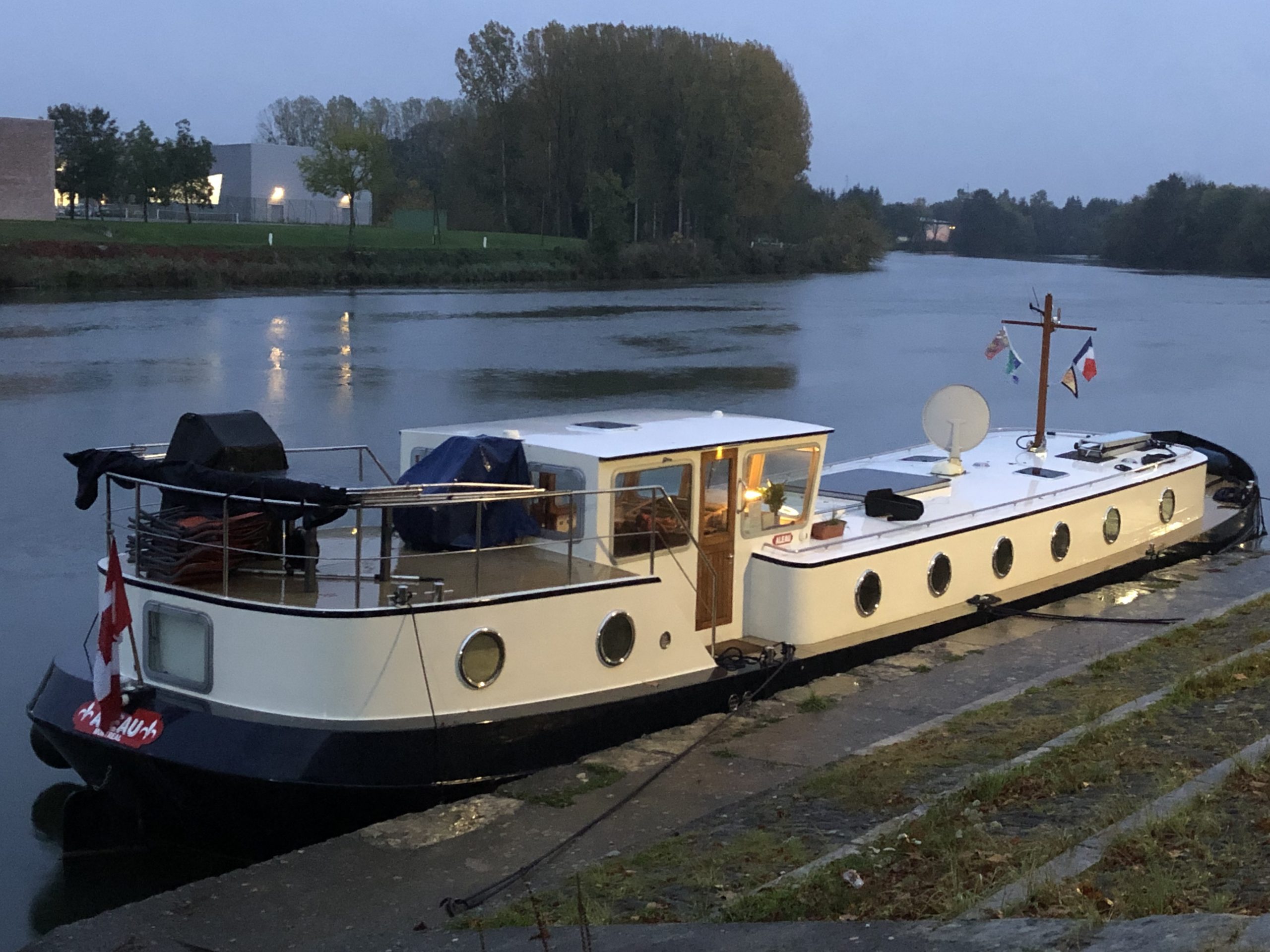It has been a challenging few weeks – both physically and mentally.
The previous chapter describes our wait in Météréol-sous-Sancerre. The VNF informed us that the depth of water in the stretch in front of us was down to 0.7 metres. Aleau needs almost twice that. We were on our way to Paris – to our winter mooring at the Arsenal marina. But if we couldn’t get through that 2.5-kilometre stretch of low water, we wouldn’t be able to get there. Unlike driving, there are no detours on a canal – no side roads we could take to get past the section that was closed to us. We were going no farther.
We had had numerous conversations with the VNF – in person and on the phone. The response was always the same – we won’t be able to make it through the section with low water. Not this year.
The temperatures have been scorching – with no rain in the forecast. That heat has been drying up the canals. A few have already closed for the year.
I received the map below from the VNF minutes ago. It is for the area north of us – which has not been as hot. As you can see, there’s a lot of red on the map – and not a bit of green. I have not yet received the map for our area. Maybe the VNF ran out of red ink. (The numbers indicate locks.)
Finally, we gave in. We would have to spend the next eight months in Nevers and try again in the spring. We turned around from where we had been waiting and hoping – Métérérol-sous-Sancerre and made a very hot and uncomfortable 7.5-hour cruise to Beffes. Jeannie was melting. Due to low bridges, we can’t have the Bimini up and must stand in the hot sun for the entire journey. The wheelhouse was even hotter so steering from there was not an option. The outdoor temperature was verging on 40-degrees.
It was about to get more miserable. All of a sudden, a deafening sound and violent shaking. Aleau stopped dead in her tracks. She wouldn’t move. As soon as I applied any throttle, she would shake and sound like she was about to explode. I thought of the options. Phone the shipyard in Marseilles-les-Aubigny and see if Remi could come. But I didn’t know if he was a diver who could go under Aleau. Plus, it was Saturday. Could we even reach him? The only other option was not one I relished – put me in the water have me go under Aleau. Blind. I don’t have goggles onboard. I took the plunge and felt around for the propeller shaft. I could feel a massive amount of weeds wrapped tightly around the shaft. Jeannie got me a bread knife and I started hacking away. It took a long time but, finally, I was satisfied I had got most of the weeds off the shaft. It was time to get back onboard. Except I couldn’t.
Sitting in the scorching sun, Aleau had become too hot touch. As soon as I tried to grab onto her and pull myself out, I burned my hand. We had a so-called boarding ladder. Except I couldn’t board. It was two nylon cords running through four plastic steps. Whenever I put a foot on it, it would swing to one side. It would have been better as a game at an amusement park – one with which you’d never be able to win even the tiniest stuffed animal. I was still in the water and getting tired. I couldn’t climb out. Then an idea, put on a pair of thick mechanic’s gloves, get them soaking wet, and try climbing up on the shady side. It worked. And so did Aleau when I fired up the engine and put her in gear. Two hours after coming to a grinding halt, we were on our way again.
We spent the night in Beffes – where we again had the mooring are all to ourselves. Unfortunately, that wonderful restaurant was closed. The two geese were still keeping guard.
The next morning, we began the rest of the trip to Nevers. Before we cast off, I checked my e-mail. The VNF had just sent us a note that the canal was open to us. Another U-turn. Another 7.5-hours in the intense heat. But at least we were on our way to Paris.
Seven-and-half hot hours later, we were back in Météréol-sous-Sancerre. Déja vu all over again.
The next day, we tried to make up for lost time – and get as far as we could in case water levels dropped again – as they surely would. Once again, there were sections where weeds blanketed the water. Most of them were technically not weeds – although they had the same effect on the prop. They were cuttings blown onto the canal as tractors mowed the banks. Not good for us. Not good for the environment. I took the photo below because I was intrigued by what appeared to be half-church and half castle. It also shows how the canal edge has been mown.
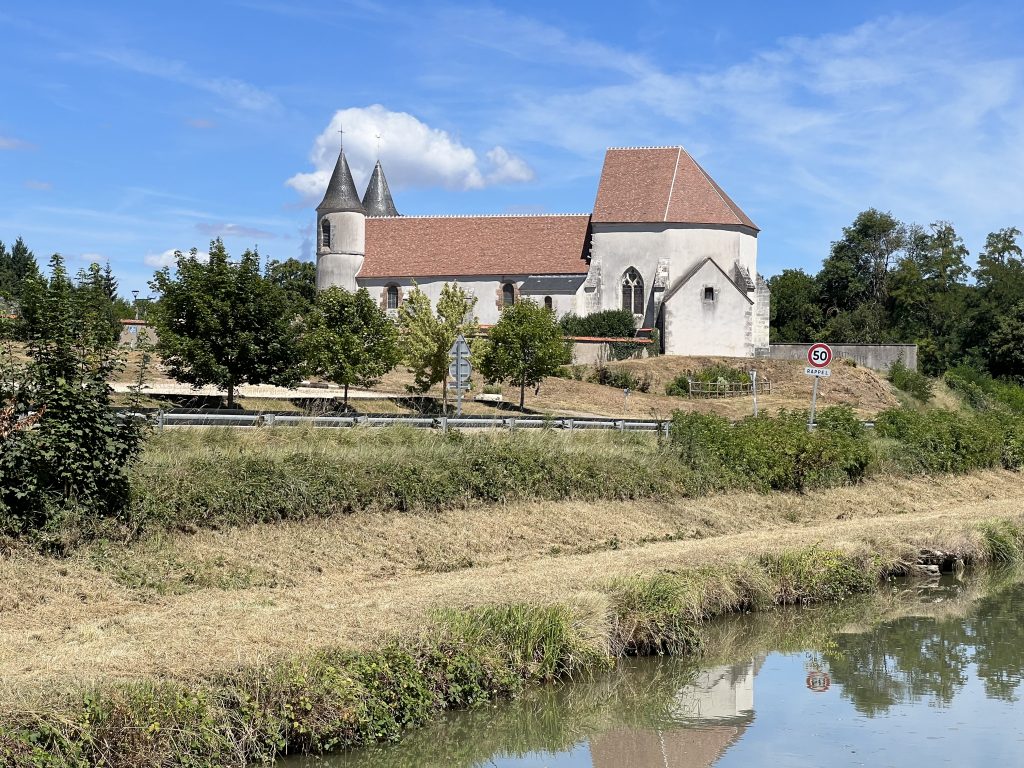
This photo shows just a few of the cuttings. Imagine them covering the entire width of the canal for kilometre after kilometre.
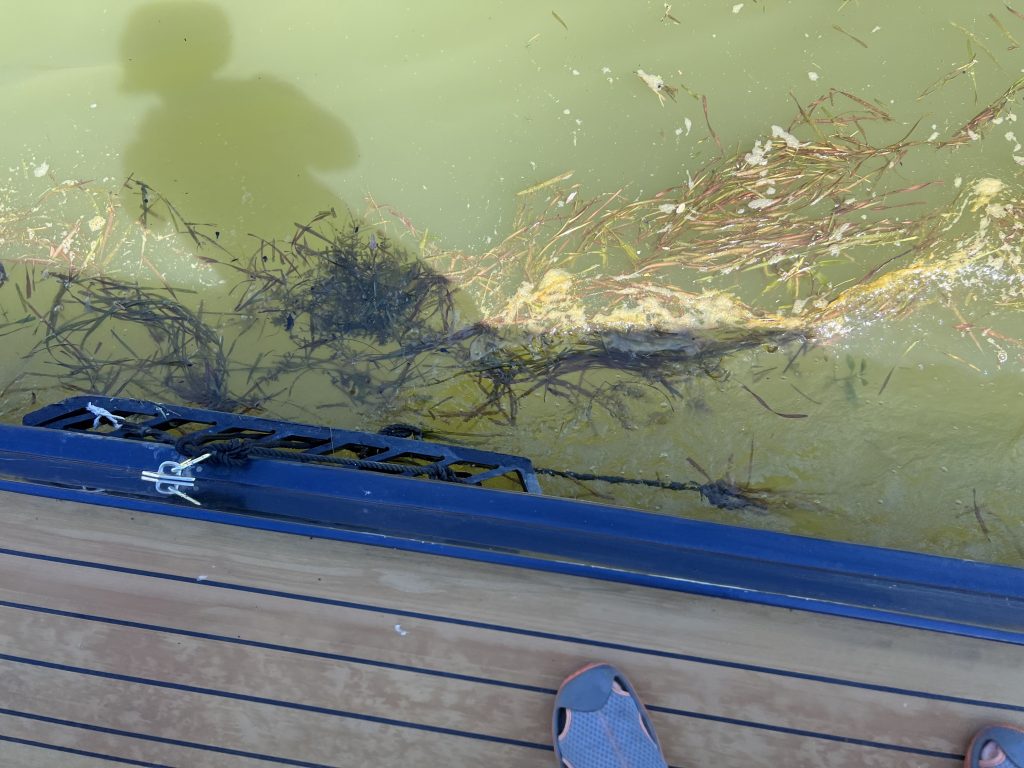
Mowing really served no purpose as the areas left wild were as pretty as were mowing had taken place. Prettier in fact. Then we got a notice from the VNF – warning us to be particularly careful at a specific spot on the canal. One of the tractors that had been sending enough vegetation to clog our prop had fallen into the canal. There’s a message in there somewhere.

We moored overnight at the edge of the canal in Beaulieu. Other than a place to tie up, there was nothing there. But it was our last night on the Canal Latéral à la Loire. Tomorrow, we would cross the Loire on the Pont Canal and stop for a day or two in Briare.
The Pont Canal in Briare is magnificent. It is 662-metres long – longer than seven Canadian football fields put end-to-end. It was inaugurated in 1896. And my eyes lit up as we approached it.
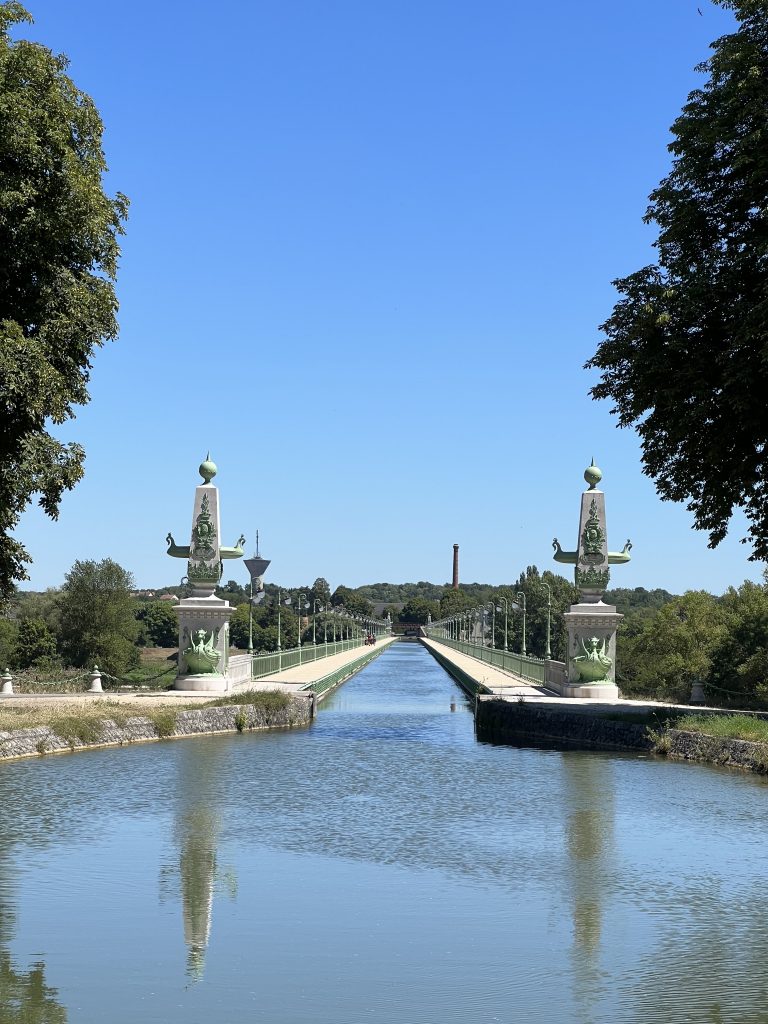
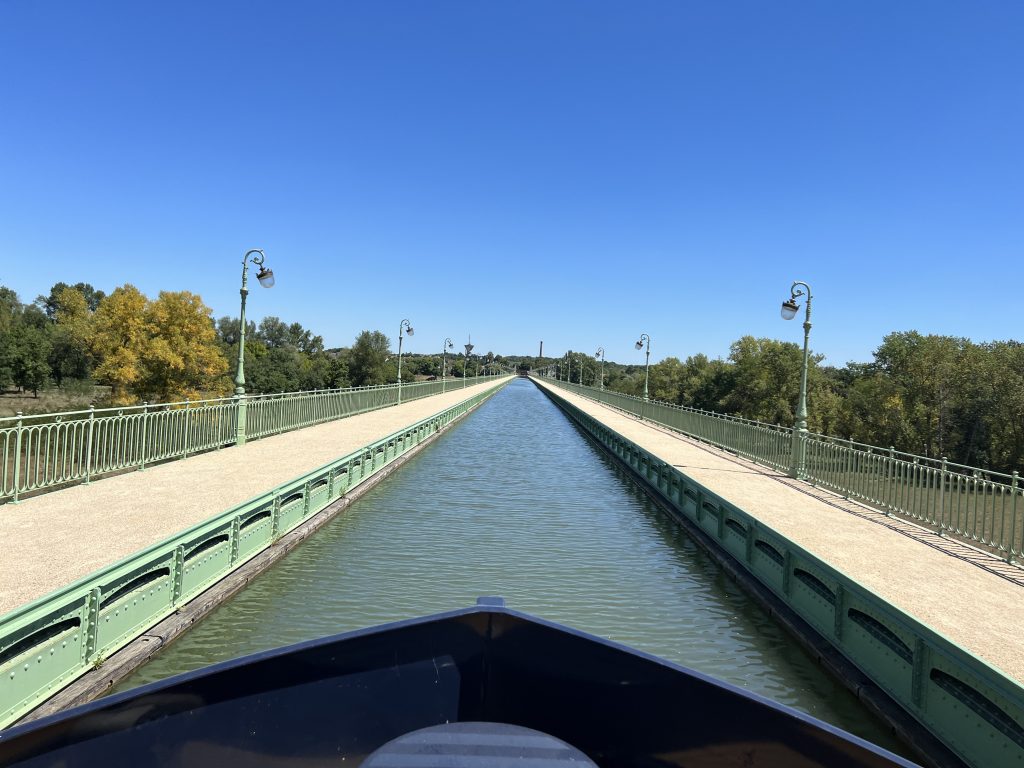
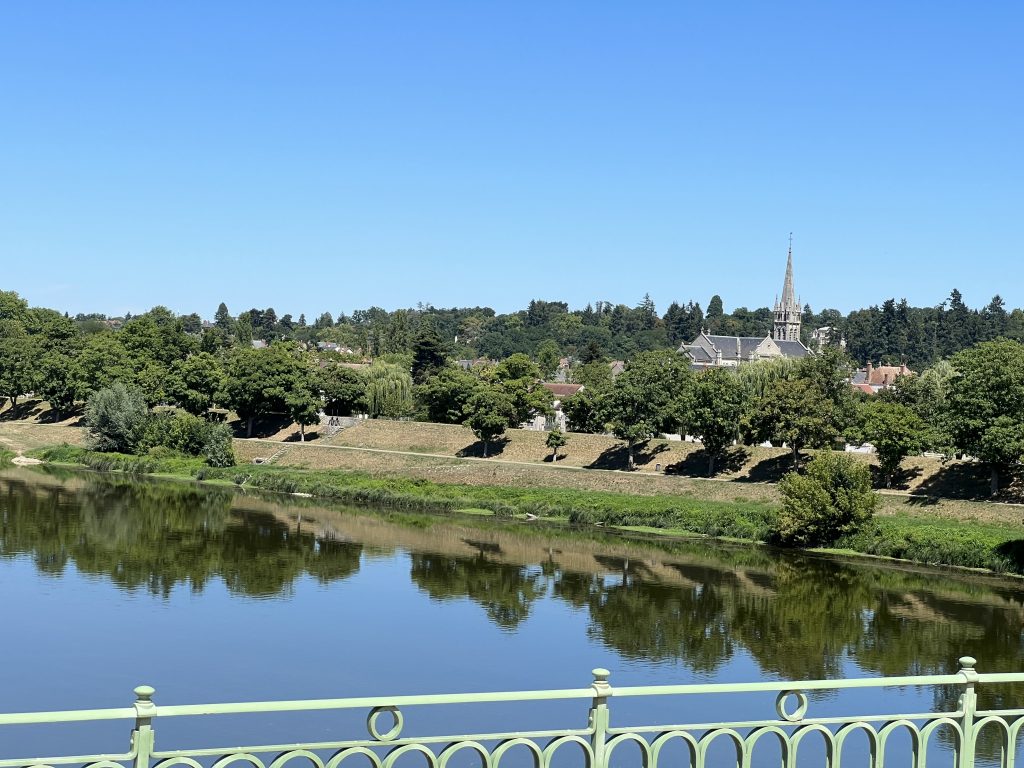

We’ll stay a few days in Briare – and try a few restaurants. Then we’ll be on the Canal de Briare. Let’s hope the water stays deep enough for the rest of the trip.
